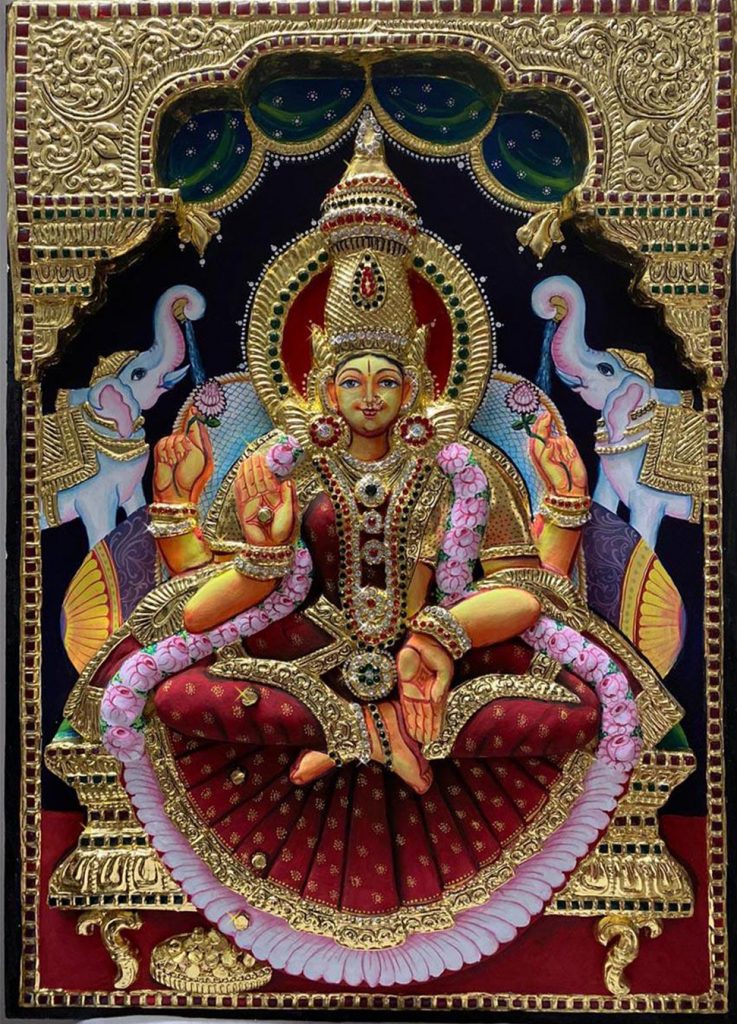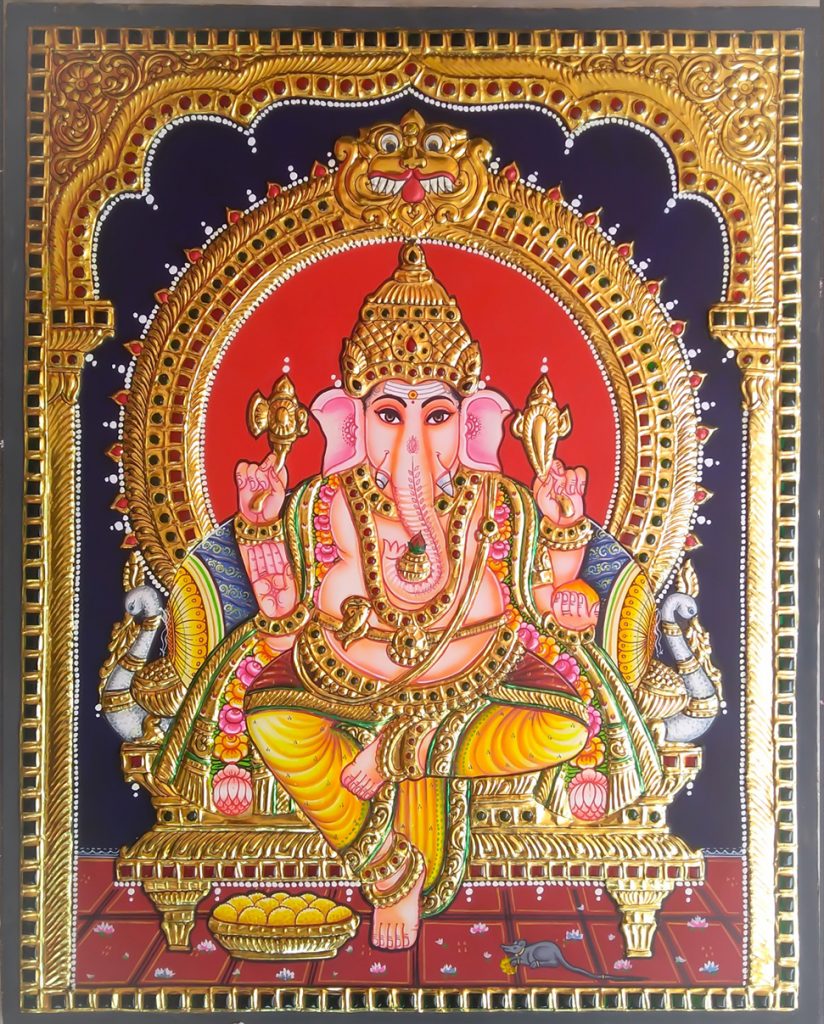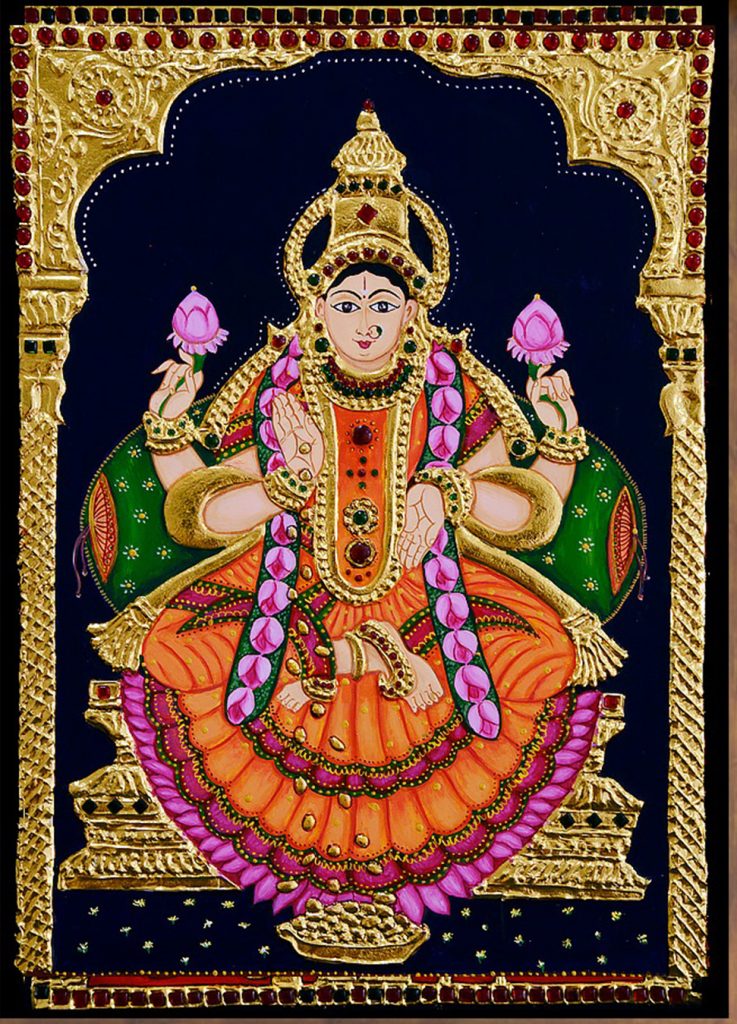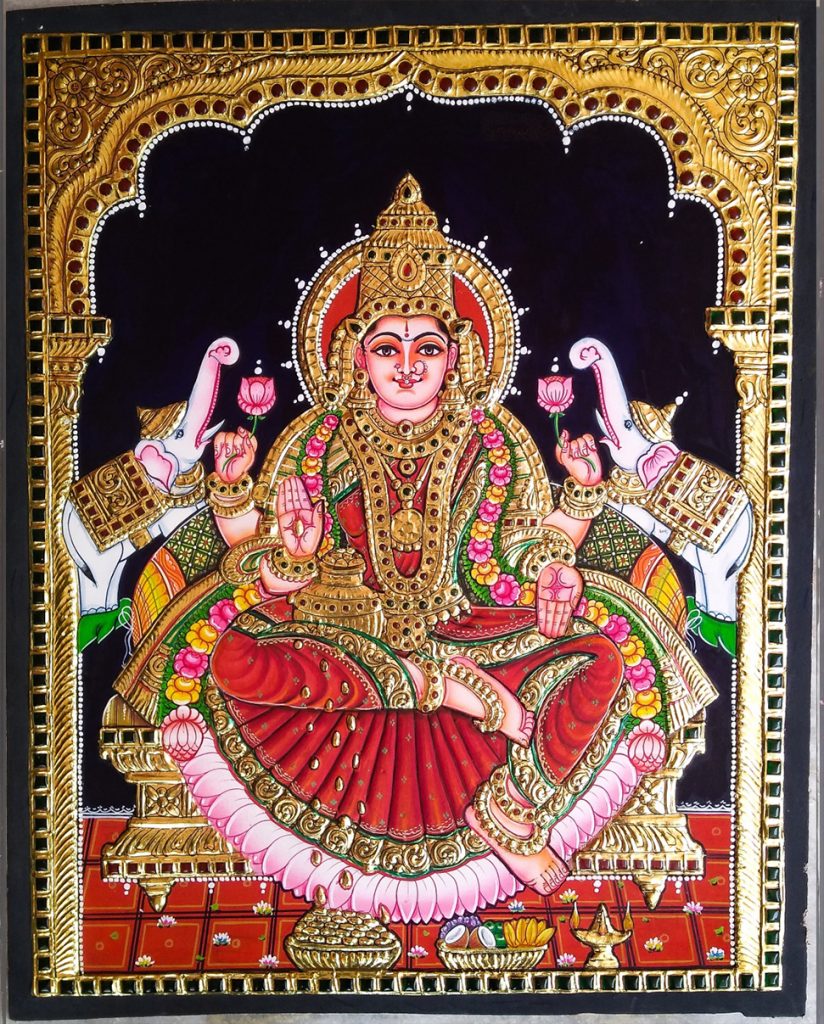The classical, ornate and lavish style of painting from the town of Tanjore (also known as Thanjavur) in Tamil Nadu, is today eponymously called as Tanjore Painting or Tanjore Art.
While the tradition of Tanjore art goes back to the early 17th century and was used as an object of worship in temples and homes, they are today purchased by art lovers as an investment or representing an art collectors’ choice.
The paintings are known for their vivid colors and depiction of Hindu gods. In recent times though, they’ve transcended their religious trappings to become souvenirs and collectors’ items.
Today – Tanjore paintings are recognized for their lavish representations of deities and traditional motifs and themes – created using vivid colors and embellished with semi-precious gems and gold foil ornaments.
The Origin of Tanjore Paintings
Recognised and supported by the kings of the Chola dynasty in the 16th century – the art evolved under the patronage of the Maratha rulers, the Nayaks of the Vijayanagar dynasty, the Raju communities of Tanjore and Trichi, and the Naidus of Madurai
Maharaja Serfoji II (1777–1832 CE) of the Maratha dynasty was a great patron of culture and the arts. Large paintings of deities and kings, their courtiers, and aristocracy were painted and erected in Maratha palaces and other structures.
The Tanjore Art tradition drew extensively on the many different ethnic groups that fostered the art form. It also absorbed elements from well-known painting styles that belonged to the Vijayanagara school, such as the Tirupati and Kalamkari styles. Tirupati paintings were created in the well-known temple town of Tirupati using a variety of mediums and techniques. Many of them featured deities and were gilded and set with gems and gold in a way that was reminiscent of Tanjore paintings.
The Golden Legacy of Tanjore Paintings
Tanjore paintings are also known as “palagaipadam,” which literally means “picture on a wooden plant.” This is because these images are engraved on solid wooden boards.
Simple iconic compositions, vibrant colours, shimmering gold foils applied over gesso work, and glass inlay beads on precious and semi-precious gemstones are the distinguishing features of Tanjore paintings. Tanjore paintings showcase influences from the Deccan, Vijayanagara, and Maratha empires as well as European forms which makes it so fascinating.
What makes Tanjore Paintings Unique?
The Gesso work or its three-dimensional effect – is the most striking feature of Tanjore
The gesso (embossing method) work is done to add finer details like flowers and clothing folds that are slightly elevated above the base of the painting – creating depth and dimension. Tanjore Paintings are also known for the use of 22-carat real gold foil that is used to enhance the painting’s magnificent appearance. The use of both precious and semi-precious gems also adds to the impact and beauty of the finished artwork. A genuine Tanjore painting can last for decades without getting tarnished.

Exploring the art themes of Tanjore Paintings
Hindu gods and goddesses serve as the inspiration for Tanjore art. The paintings feature Krishna, Vishnu, Ganesha and Lakshmi, occasionally with extra characters or objects like temple arches, animals, plants, etc. Tanjore paintings depict tales from Puranas and religious texts as well.
The hallmark of Tanjore paintings is the representation of a single deity. They have an oval-shaped face, round eyes, and a well-defined body and are enclosed by drapes, arches, or other architectural elements. Tanjore Paintings are known for their gilded temple arches with flowers, the ‘yaazhi’ and the customary golden ‘kaasu malai’ (a chain comprised of tiny gold coins) Bright color schemes, the use of precious and semi-precious stonework, and actual gold foil work give the paintings life.


Truly Timeless Art
Tanjore paintings continue to be extremely popular today and are part of many private art collections. The art has received the Geographical Indication (GI) label in 2007.

Summing Up
As one of the oldest artistic traditions, Tanjore paintings represent a legacy. At WorldArtCommunity – we have curated a stellar collection of Tanjore paintings
Enhance your spaces with timeless Tanjore art.
Image Courtesy:https://www.dsource.in/resource/paintings-thanjavur/making-process
